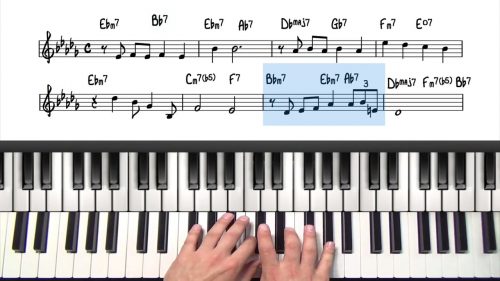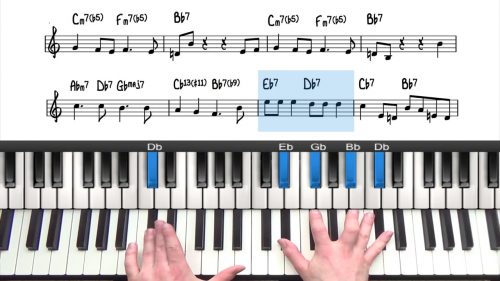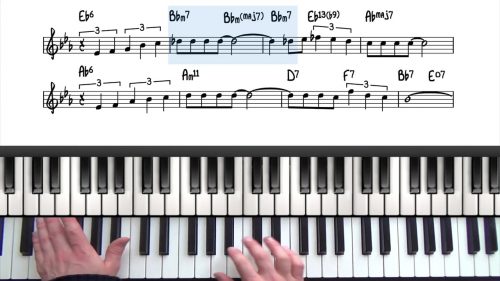Dominant Chord Voicings Part 2
In this lesson we are going to explore some of the different option you have available to you for voicing dominant chords.
This tutorial is broken into 2 parts and we will be revisiting theory on UST, suspended harmony and inner voice movement over dominant chords.
We follow the same format as the lessons on major and minor chord voicing options. The idea behind these videos is to cover the melody notes that you are most likely to come across for major, minor and dominant chords.
For major chords, the melody will more than likely be one of the notes of the Lydian mode. So if you are playing a C major chord, the melody note will probably be one of the notes from the C Lydian mode.
For minor chords, the melody note will more than likely be from the Dorian mode and also the b6th from the Aeolian mode.
For dominant chords however, you can come across virtually any note in the melody. The only exception is the major 7th. If we think of the mixolydian mode, that gives us…. We then have the alterations that are b9, #9, #11 and #5 and so that only leaves this one note out.
Because of this, you have many more options when voicing dominant chords. We are now going to work through all of the potential melody notes you could come across using actual examples from jazz standards we have covered. In part 1 we work from Root up to major 3rd and in part 2 we start at the 4th and work up to the b7.
Lesson Downloads
-
Dominant Chord Voicings Lesson Supplement File Type: pdf
Practice Tips
Part 2 of this dominant chord voicing lesson covers the following jazz standards.
- The Nearness Of You
- Tenderly Part 1
- These Foolish Things
- When I Fall In Love
- Easy To Love
- What Are You Doing The Rest Of Your Life
If you would like to learn these standards, check out the full tutorials.






Hi Hayden,
So if I’m following correctly, once I familiarize myself with major, minor, and dominant voicings that I can play over all 7 notes in all 12 keys, I can apply them onto any song in the major key to cover the I, IV (maj7), II, III, VI (minor), and V (dominant) chords. That leaves the VII chord (often a diminished 7th). What voicings can I play over them?
Paul
Hi Paul 👋🏻
Good question!
Yes that’s correct, by memorising voicings that work under each scale degree of the chord, it equips us with. a selection of voicings that we can use when playing jazz standards.
For diminished chords, they can be viewed as ‘dominant b9 chords in disguise’ – check out my lesson here for more information: https://www.pianogroove.com/jazz-piano-lessons/understanding-diminished-chords/ – Understanding this relationship is useful for choosing voicings for diminished chords.
Here are 2 lessons from Jovino and Tuomo where they talk about diminished theory and application:
and
Hope that helps and let me know if you have any further questions.
Cheers, Hayden